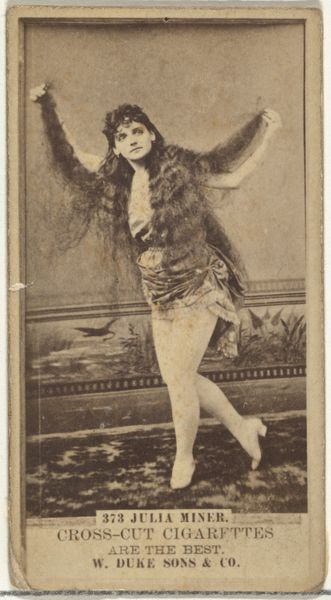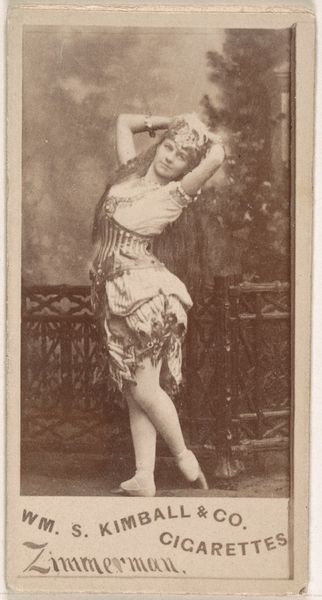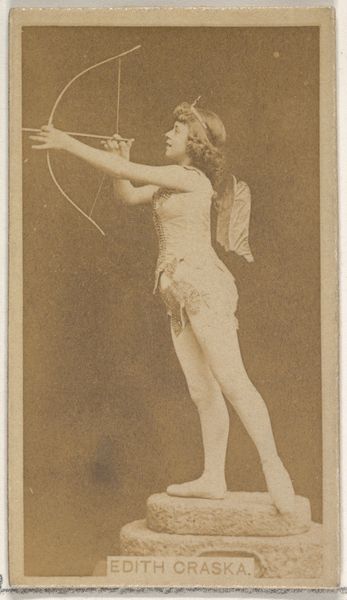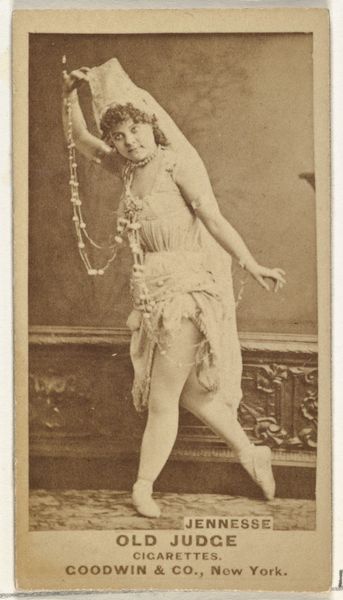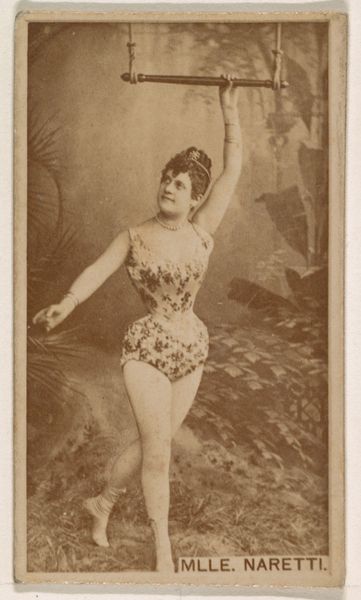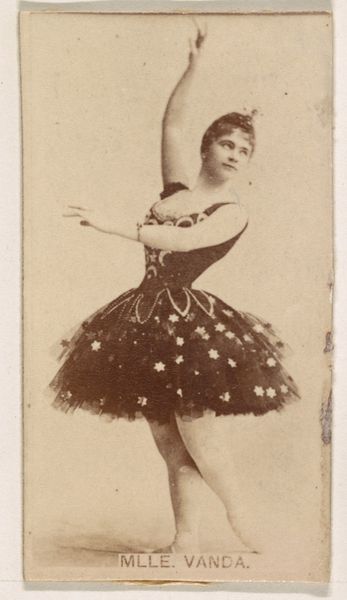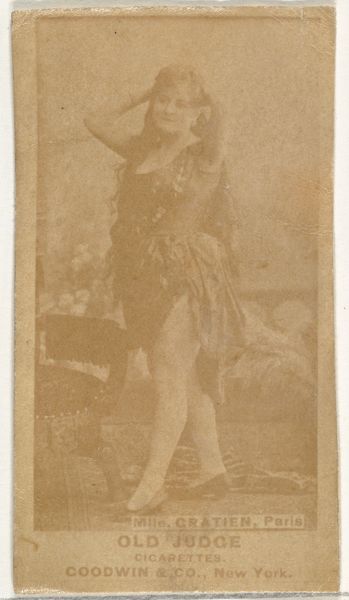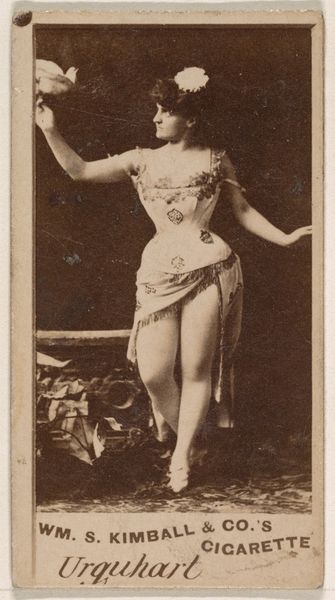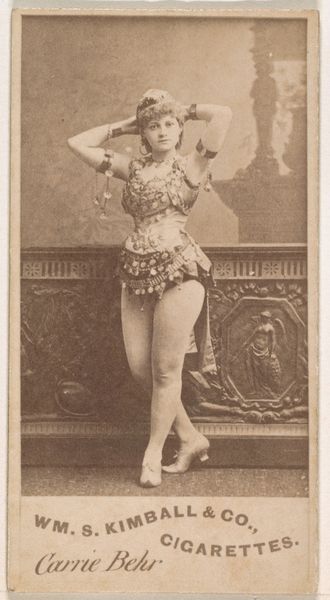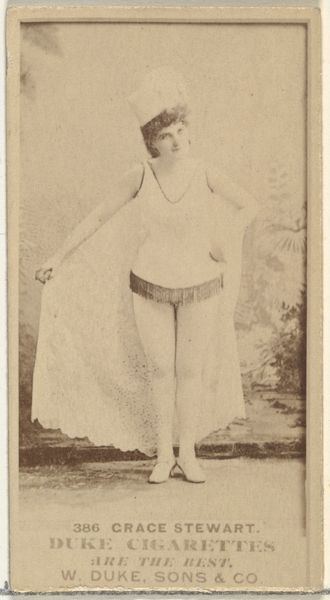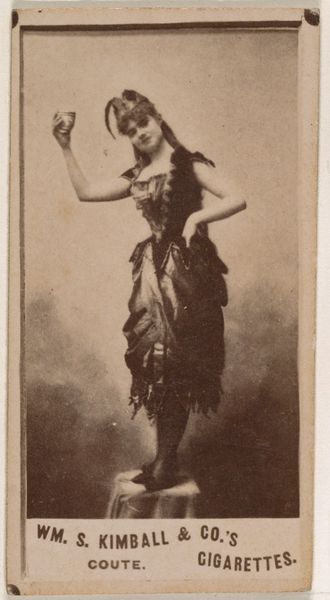
Étoile, Gaietee, from the Actors and Actresses series (N45, Type 1) for Virginia Brights Cigarettes 1885 - 1891
0:00
0:00
drawing, print, photography
#
portrait
#
drawing
#
pictorialism
# print
#
fantasy-art
#
photography
#
19th century
Dimensions: Sheet: 2 3/4 x 1 3/8 in. (7 x 3.5 cm)
Copyright: Public Domain
Editor: So, this is "Étoile, Gaietee," a print, drawing and photograph from between 1885 and 1891 by Allen & Ginter, currently held at the Metropolitan Museum of Art. It's so interesting to see a fairy-like image being used to advertise cigarettes. What do you see in this seemingly contradictory piece? Curator: What strikes me is precisely that juxtaposition you point out: the ethereal fairy against the gritty commercialism of a cigarette ad. Allen & Ginter, like many tobacco companies then, used collectible cards to boost sales, and images of actresses and performers were incredibly popular. So this "Étoile, Gaietee," likely a stage name, becomes a tool. It is using a female figure, but one seemingly divorced from reality or naturalism, to sell cigarettes to male consumers, primarily. How might that resonate today, do you think? Editor: I think we see echoes of this constantly - using idealized figures, often women, to sell products with the pretense of offering an escape or elevated lifestyle. So it’s more of the same, then. But who would actually consider this art, let alone put it in a museum? Curator: Well, consider the power dynamics at play. Who gets to decide what art is and isn’t, is itself shaped by social forces. A card like this, originally mass-produced and disposable, gains value and is eventually legitimized when institutions like the Met decide it is worth preserving and studying, providing insights into 19th-century popular culture and the ways companies sought to manufacture consent. This also opens it up to critiques around gender and commercialism, which may have been impossible when this was produced. Does that change your view of it? Editor: It does! It's no longer *just* a pretty image but a mirror reflecting the social and economic contexts that produced it, and what that means today. It makes you wonder what images *we* take for granted will end up in museums, revealing aspects of our society that we don't even see right now. Curator: Precisely. The political landscape shifts the lens, transforming what we consider worthy of both admiration and critical reflection.
Comments
No comments
Be the first to comment and join the conversation on the ultimate creative platform.
